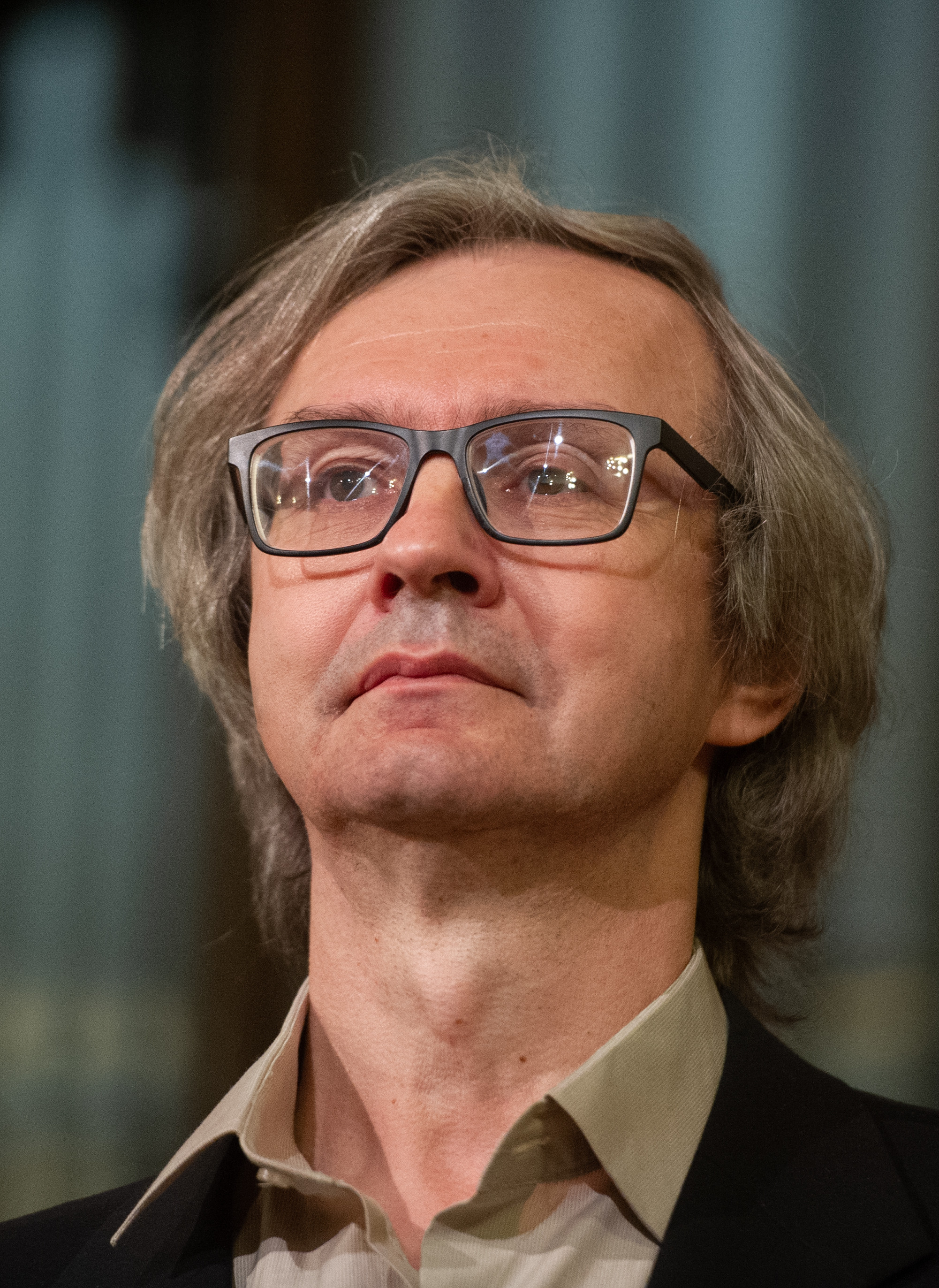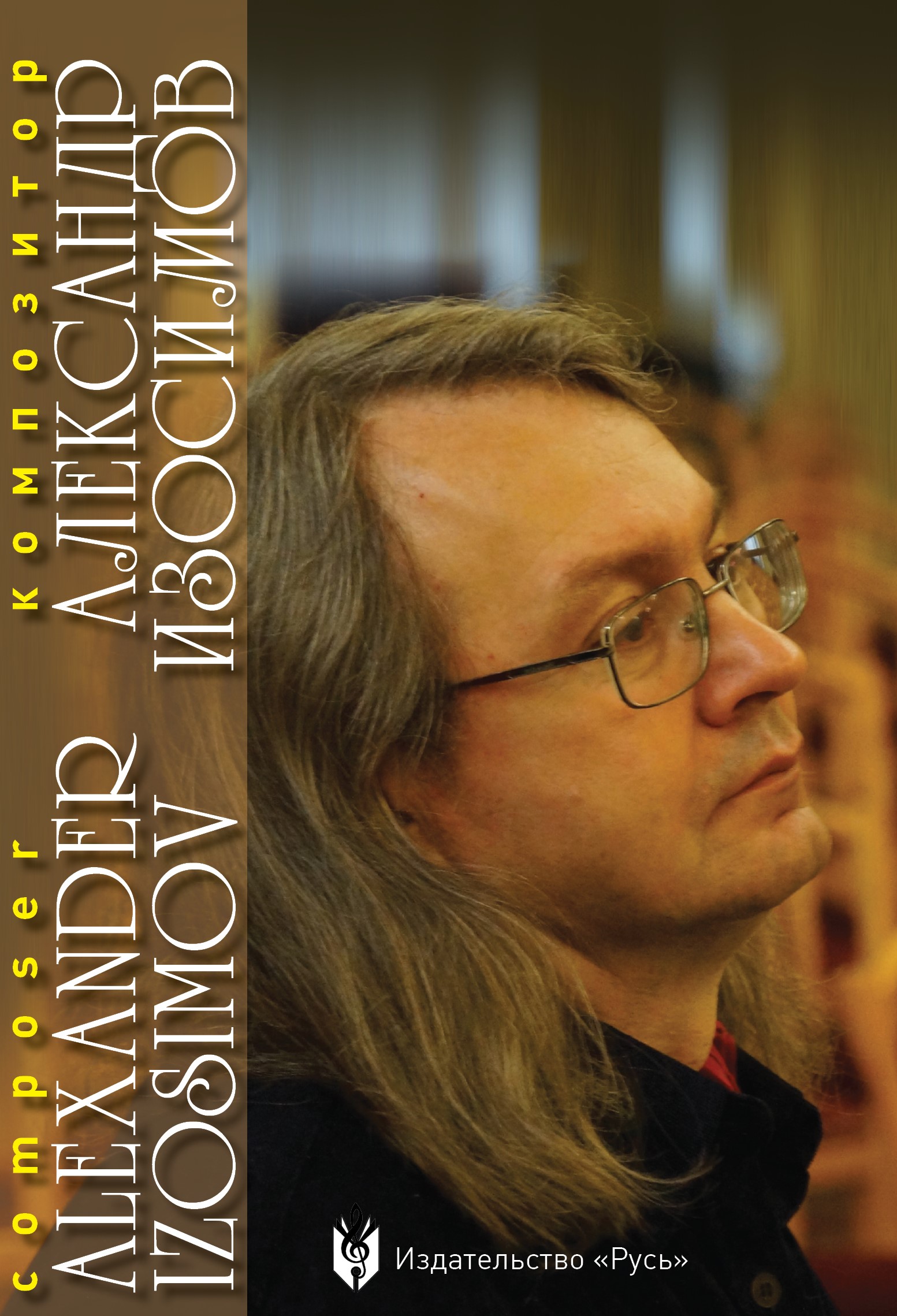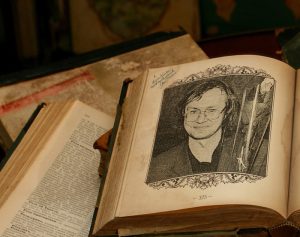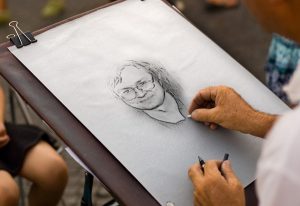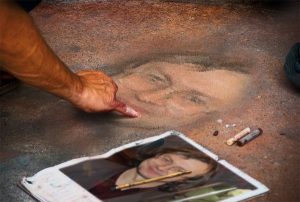|
|
Izosimov Chamber Music
St Petersburg's composer Alexander Izosimov (1958) is famous for the original phenomenon of
his artworks in contemporary music. Not declaring traditions, but being partly close to them his compositions
do not completely fit the avant-garde standards. Though we can definitely see that they come from the spiritual
base. Among the most important works in the composer's artistic heritage we can name the "Paradise Lost" opera,
the Symphony, "The Chosen One" ballet, 40 vocal works (summarized in two major cycle , called "Songs of the beautiful stranger"
and "Tetro. Songs, the Earth sang to me in my dreams"), "Empathy for the soul" for chorus a capella, "Iaoniya.
Thank the Lifegiver" for choir, organ and orchestra, two string quartets, and a piano cycle" Transformation ", by name.
Alexander Mikhailovich Makarov, more commonly known as Izosimov, was Boris Ivanovich Tishchenko's student
in the Leningrad Conservatory. By the year of graduation(1984), the composer realized, that almost all his musical
works in 80th were not good enough. He considered them as weak works and subsequently deleted them all.
Self-criticism has pushed the composer to continue training and studying on his own. He learned every score he
could find in Russian National library, but this was not enough. And only an opportunity to take two trips to
Germany and France in the early 90s revealed him more access to the information. Besides music Izosimov was interested
in humanely oriented spiritual science of Rudolf Steiner. It exerted a productive effect to his creative mind,
and helped the invention of the new music writing method, which the author himself called "the breathing scale".
The original technology was highly appreciated by Alfred Schnittke in the Hamburg Conservatory.
Being encouraged with the support of a famous master, Izosimov returned to Russia, where he started a new work for himself.
He was busy reading lectures at the Russian National Library and producing programs on music of the second half of
the 20th century on Radio Petersburg. The end of 90's was overshadowed by a deep crisis caused by "poisoning" with a lot
of avant-garde music he used to listen to, and a personal tragedy, the death of his 15-year-old son. It took a
while to get back to writing. The following decade was marked by the creative activity. The composer creates works
in two directions, "conventionally traditional" and close to the avant-garde art "breathing scale", one after another.
Some works are addressed to Philharmonic audience, and they are rather easy to perceive. The others require more
developed hearing of modern art trend connoisseurs. However, both areas share a common beginning of a distinct musical personality. Five instrumental records on this CD were created and performed at different times (1993-2006). And it took about ten years to finally see the artistic meaning which brings this compositions together . Each piece of music is like a world, which step by step opens the composer's musical universe. There is a person, there is Christ, there is Light and there is Darkness in his music. The action takes place everywhere: on Earth, in the sky, in the human soul. That's how the author comments on one of his compositions: ""I listened to the silence of the leaving night, I wanted to understand the wordless language which he soul spoke, when it was a cloud..." These lines from my poem were the starting point for the composition "When my soul was a cloud..." Both musical and poetical forms reflect a human soul life in the prehistoric times, before the creation of the body. There was a cloud instead of a body, and the soul learned to cry, to laugh, to dance, to fall asleep being in this cloud...
Something incredible in the names, which can be found only in the world of poetic imagination, provided me with
endless opportunities to give sound images from almost abstract to very specific ones." The author's comment to
his another composition, "The Gods are light-foot"is also remarkable. The work was partly initiated by
Nietzsche's line: "Good is easy, all the divine walks with gentle steps" and partly by the composer's own
poem "Celestial Virgins wearing wreaths, play roundelays in the clouds of sunset."
"A little performance of light-foot gods is played. In the first act, they soar in the clouds, sending soft
light of sunset to Earth. In the second one, they play games with light and shadow. In the third act they put on
the evil masks and break into a dance. The tradition to dress up in scary masks is common for a lot of folk cultures,
but whatever it is, bright eyes of the angels are laughing at earth's gravity under the caricature masks. "
The motivation to composing "Infernale" was found in the sacral text, "Our Father," by Rudolf Steiner:
"The evil witnesses of the released Me-essence rule. Experience the guilt self-hood increased by others in your
daily bread. For the man has disappeared from your kingdom and has forgotten your name - you Fathers in Heaven".
Tragic meaning of the text as, the author himself says, inspired him and inspired the creation of music Infernale.
"The musical language is based on a five-sonorous complex: c-des-es-fes-ges of his breathing scale. It's only the
beginning of a modal matter, without no movement toward enlightenment which is compensated with active rhythm, texture,
timbre and dynamic transformation of the material inside the dark and tight spaces. Sound process occurs in seven stages.
I marked them as thought forms. Natalia Klimova specializes on researching Alexander Izosimov's works.
She defined the peculiarities of his open method: "the breathing scale - artificial modus, capable of regulating
the vital process of musical matter. The fret became an expression of the work's general idea.
It causes the whole musical work breathing, that has light in its nature. The fret moves from the compressed "dark" state
to an expanded "bright" one, through rotation of small and large seconds within five sound clusters." She calls the "breathing scale" method a unique phenomenon.
"It can be compared to the discoveries of Olivier Messiaen's modes, sound modes of Iannis Xenakis, "spectral" scales
of Tristan Murail and Kaija Saariaho. Searching the new sound structures the musicians often turn to electronic devices
that attract noise and lighting effects. The "breathing scale" method is based on the immanent features of music.
It returns the lost priorities to the traditional music tools giving an opportunity to implement different creative ideas."
"The Chameleon" (1993) for piano - is the first work composition based on the "breathing scale". Performed in 1994.
"Infernale" (2006) for violin and piano. The duo was first performed in 2006. "The Gods are light-foot" (2005), a composition for clarinet, bass clarinet, cello and piano, divided in three parts: "Round Dances in the clouds of sunset"", "Dance of light and shadow", "Ahriman, span an!". The premiere took place in 2009.Sonata for Piano (1999). Consists of three parts: "Moderato", "Lento misterioso", "Moderato". The first performance took place in 2004. "When my soul was a cloud" (2003), a composition for clarinet, bassoon, trombone, violin, viola and double bass. Consists of seven parts: "The cloud is born," "On the Rainbow swing", "Lullaby of cloud", "Laughing cloud", "Whiter than snow", "The cloud is dancing ","The cloud is crying". First performed in 2007.
All the pieces were performed on the International Festival "St Petersburg Musical Spring".
|
|
|


